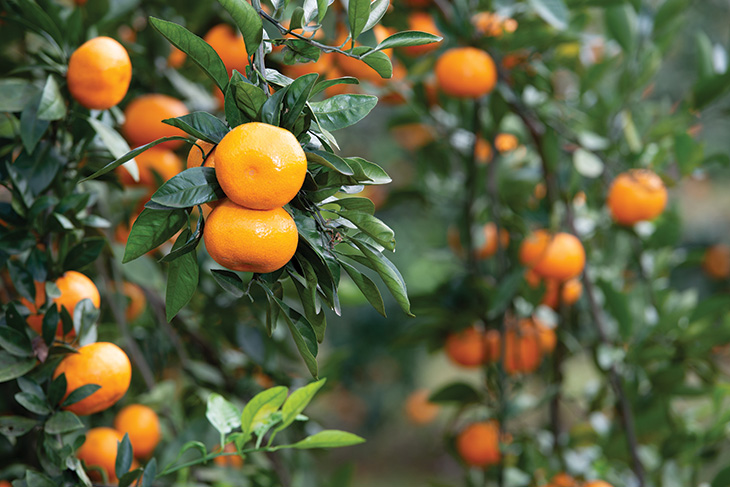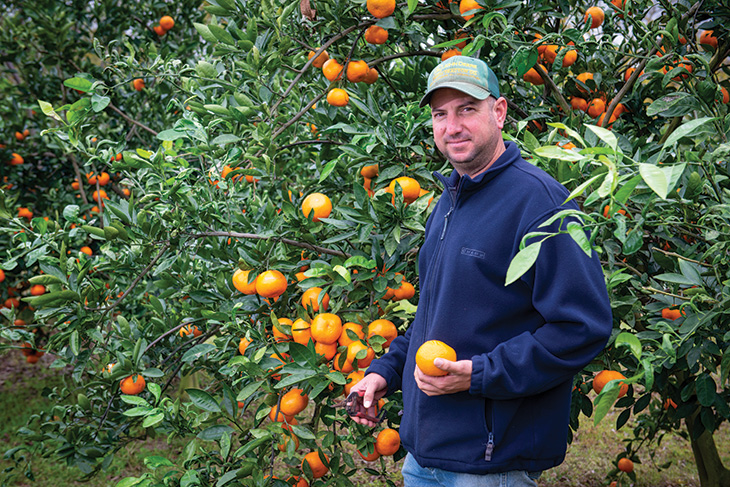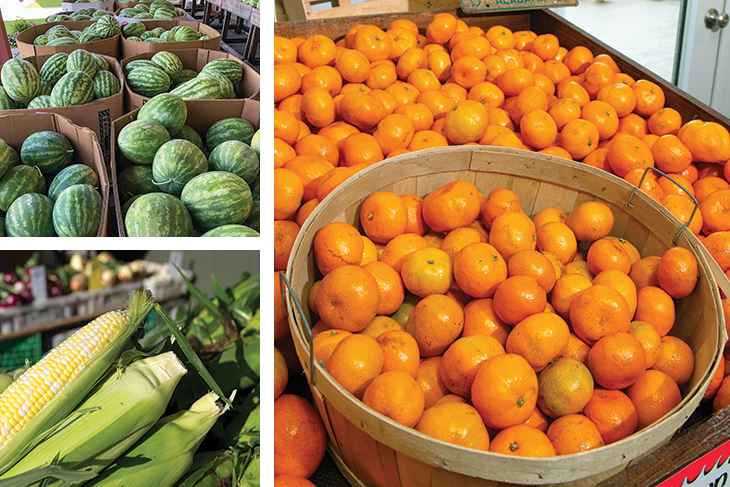
Photo by Jeff Tesney

Photo by Jeff Tesney
Jeremy Sessions and his family grow as many as 750,000 pounds of satsumas every year — sold mainly to public school systems.
Satsuma. Tangerine, clementine or orange?
None of the above. It’s a mandarin, explains Jeremy Sessions. He should know. His family has been growing satsumas for 25 years near Mobile, Alabama.
Sessions Farms owns 3,500 satsuma trees, planted across several orchards. Their average annual yield is 600,000 pounds, with bumper crops as high as 750,000 pounds.
This is impressive since harvesting satsumas is labor intensive. Each piece of fruit is plucked by hand. It takes nearly 20 people — working 15-hour days — to pick, grade and ship fruit daily during the season. These high labor costs mean Sessions Farms need to get a premium price, which takes a premium product.
To ensure the highest quality, the Sessions’ operation is certified, meeting strict food safety requirements. This requires special facilities.
Four years ago, their business had outgrown their warehouse and they were renting additional storage. In order to maintain an A+ rating, they knew they had to expand their facilities.
Growing With Alabama Ag Credit
“We either had to grow or get out of the business,” explains Sessions. “Alabama Ag helped us take that next step. They make borrowing money as easy as you can.”
Sessions Farms secured a construction loan to build a 6,500-square-foot warehouse. The outside walls of the structure are built with special insulated panels. The panels allow any part of the warehouse, or all of it, to become a cooler. All they need do is put up another interior wall. Install refrigeration in the newly created space. And viola, they have another cooler.
“Without Alabama Ag, we couldn’t have expanded,” Sessions says. “Cultivating a relationship with our banker is important to us. Alabama Ag has been our partner for more than 25 years.”

Photos by Jeff Tesney. Corn photo by Drifting Light/Shutterstock.com.
March through December, you can buy some type of fruit or vegetable from the Sessions Farms’ produce stand — all grown on their land.
Adapting to Changing Markets
Not only does the family grow satsumas, they raise nearly every type of fruit and vegetable. Other specialties include watermelons, sweet corn and pecans.
Sessions explains their crops not only change with the season, they change to meet consumers’ tastes. “We adapt and grow what’s popular,” he says. “Variety has been key to our success.”
Making Farming a Family Affair
During harvest — it’s all hands on deck.
“It doesn’t matter what your regular job is, everyone jumps in to do whatever is needed. We never wear just one hat,” Sessions says.
From March through July, it takes the whole family, plus extra hands, working seven days a week to keep up with demand. Family members include Sessions’ dad, Art; his Uncle David; and cousins Adam and Blake. The only time they take a break is in August and at Christmas.
Even then, there’s always something to do.
“We’re either getting ready to plant, planting, spraying, mowing or picking,” Sessions says.
– Staff
What do you call that little orange fruit?
You’ve heard of satsumas, clementines, mandarin oranges and tangerines. Are they really different types of citrus? Or are those just different names for the same small, sweet orange fruit?
Yes and no.
They are all mandarins, but they’re different varieties. Originating in the Far East thousands of years ago, mandarins were first imported to the U.S. in the 1800s.
Tangerines and clementines are mandarin hybrids, but satsumas are purebred. This makes satsumas sweeter, easier to peel and more tender than their distant cousins.